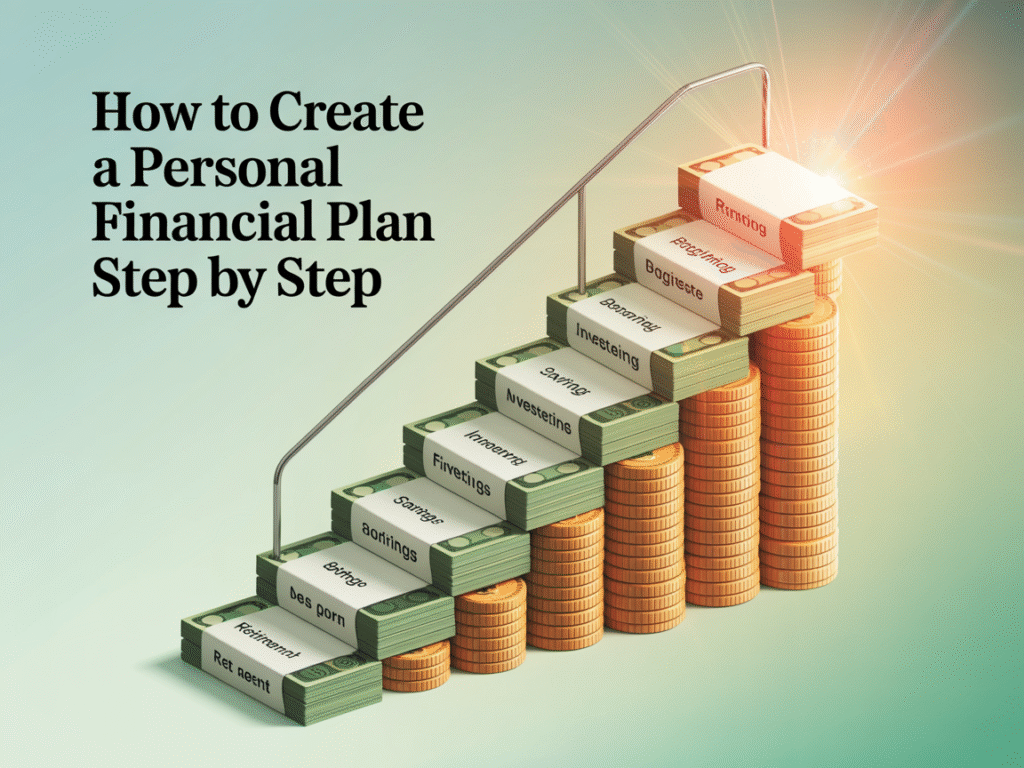
Hey, if you’re reading this, chances are you’ve been thinking about your money situation and maybe wondering, “Where do I even start to get my finances in order?” Believe me, I get it — personal finance can feel super overwhelming, especially when it’s all mixed up with bills, debt, savings, and “what if” scenarios. The truth is, creating a financial plan doesn’t have to be some scary, complicated thing. It’s actually just about breaking things down, step by step, and getting a clear picture of what you want and how to get there.
I’m not going to throw a bunch of confusing jargon at you or expect you to become a math whiz overnight. Instead, I’ll share some simple steps that work, based on real experience — mine, and from people I know who struggled with this too. So grab a coffee, and let’s get into it.
Step 1: Get Real With Your Money Situation (No Judgment Zone)
The first thing you need to do — and I say this with total honesty — is take a hard look at your money right now. I mean really look. That means:
- How much do you make every month?
- What are your fixed expenses (rent, utilities, subscriptions)?
- How much do you spend on groceries, eating out, random stuff?
- What debts do you have? Credit cards, student loans, car loans?
- Do you have any savings? Emergency fund?
Sounds like a lot, but don’t panic. This is just the “what’s happening” step.
I remember my friend Jess struggled with this. She’d avoid looking at her bank statements because it stressed her out. But once she sat down and wrote everything out, she realized where her money was going — turns out, those daily $5 coffees were adding up fast!
Tip: Use budgeting apps like Mint or YNAB (You Need A Budget) to help track your expenses without feeling overwhelmed.
Step 2: Define Your Financial Goals (Big and Small)
Now that you know where your money is going, the next step is to figure out where you want it to go. What are your money goals? Don’t worry if they feel far off or unrealistic right now — just get them down.
Some examples:
- Pay off $5,000 in credit card debt in 12 months
- Save $1,000 for an emergency fund
- Start investing $100 a month for retirement
- Buy a car in 3 years
- Take a vacation without using credit cards
My cousin Dave had no plan at all and just spent whatever was left after bills. When he finally set the goal to pay off his student loans in 2 years, it changed everything — he got motivated and started making smarter choices.
Ojo con esto: be specific and realistic. Saying “I want to save money” is great, but saying “I want to save $200 a month for the next 6 months” works way better.
Step 3: Build Your Budget Around Your Goals
Okay, now the fun (and sometimes painful) part — budgeting.
You’re basically telling your money what to do instead of wondering where it went. Start by listing your income, subtract your fixed expenses, and then allocate money toward your goals.
If you have debt, prioritize paying it down — the interest can kill your budget if you’re not careful.
Take my friend Maria, for example. She was juggling credit card debt and wanted to save for a car. She created a budget that cut back on dining out and streaming services, and put that money toward debt first. It was tough at first, but seeing the numbers go down kept her motivated.
Te lo digo por experiencia, a budget isn’t a punishment — it’s a tool to help you control your money, not the other way around.
Step 4: Create an Emergency Fund (Your Safety Net)
Life throws curveballs — job loss, car repairs, medical bills. An emergency fund is the money you set aside for those moments so you don’t have to swipe your credit card or panic.
Aim for at least 3 to 6 months’ worth of living expenses. I know, that sounds like a lot, but start small if you need to.
For example, Kevin started by saving $25 a week automatically, and after a year, he had over $1,200 saved. That fund helped him when his AC broke down last summer — no stress, just used the money he’d been saving.
Apps like Digit or Qapital can help automate your savings, which makes it easier.

Step 5: Manage Your Debt Strategically
Debt is like a dark cloud hanging over your financial plan — but it doesn’t have to be forever.
Two common methods people use:
- Debt Snowball: Pay off your smallest debts first to build momentum.
- Debt Avalanche: Pay off debts with the highest interest rates first to save money on interest.
Jessica, a friend of mine, tried both and liked the snowball better because the quick wins kept her motivated.
If you’re overwhelmed, don’t be shy to ask for help — credit counseling agencies or apps like Tally can assist with managing your payments.
Step 6: Think About Retirement (Yes, Even If It’s Way Off)
I know, retirement seems so far away when you’re struggling to pay this month’s bills. But even putting a little aside now can make a big difference later thanks to compound interest.
If your employer offers a 401(k), try to contribute enough to get the full match — that’s free money!
Or look into IRAs if you’re self-employed or don’t have a 401(k).
Again, start small. My buddy Mark started with $50 a month, and he’s glad he did because it’s growing faster than he expected.
Step 7: Review and Adjust Regularly (Life Changes, So Should Your Plan)
Your financial plan isn’t set in stone. Life changes, and your plan should too.
Got a raise? Revisit your budget.
Had a baby? Adjust your goals.
Paid off debt? Celebrate and plan for the next step.
Every 3 to 6 months, sit down and check in with yourself. This keeps you on track and motivated.
Helpful Resources To Keep You Going
If you want to dive deeper, these books and tools helped me and many others:
- “The Total Money Makeover” by Dave Ramsey — great for debt and budgeting advice
- “Your Money or Your Life” by Vicki Robin — for changing your mindset around money
- Budgeting apps: Mint, YNAB, EveryDollar
- Financial podcasts: “The Dave Ramsey Show,” “The Clark Howard Podcast”
Final Thoughts: You’ve Got This!
Look, I’m not going to sugarcoat it — creating a financial plan takes some work and honesty with yourself. But it’s also incredibly empowering. It’s like finally seeing the roadmap that leads you out of stress and into control and confidence.
Remember, you don’t have to be perfect, and you don’t have to do it all at once. Just start. Take one step today, and another tomorrow.
If you mess up? No big deal. Dust yourself off and keep going.
You’re more capable than you think, and your future self will thank you for starting now.
